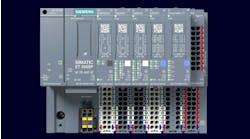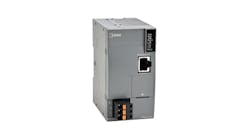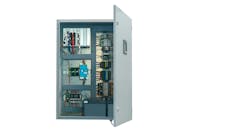Once an area is classified as hazardous with a potentially explosive atmosphere, many steps must be taken to eliminate ignition sources. When looking at a fire triangle with oxygen, fuel and source of ignition, two of the three are often present in these areas. It's the designer’s responsibility to eliminate all sources of ignition, and that includes limiting both electrical and thermal energy to a level below what could ignite the hazards present. Depending on the area classification, even the tools used for installation must not cause sparks and are therefore made with aluminum or similar material.
Intrinsic safety (IS) barriers are devices designed to limit the current and voltage that can cause sparks in a device's power and signal conductors.
When IS barriers are used in hazardous locations, some of the basics that must be considered beyond area classification are methods to eliminate hazards; certification of device or apparatus; and design and wiring methods.
It is important to point out that installing a control system in a hazardous area is not a one-man show. The facility is required by law to properly classify any area that may contain an explosive atmosphere. The control-system designer must check with plant engineering, operations or safety personnel and determine the area classification. A facility that appears to be nonhazardous may have several hazardous areas, including explosive fumes or powders, so always check.
When specifying IS barriers or any hazardous area control system components, work closely with the vendors and manufacturers. They are great sources of information and should be leveraged, along with training, if you are new to designing control systems for use in hazardous areas. Even if you are an expert, the standards and requirements change. Take a close look at your standard intrinsic safety system design, and, with a critical eye, check the components to ensure they are suitable for use in the hazardous area.
There are many applications where a spark, heat or small explosion ignites an explosive, such as a gas grill spark igniter, a hot bridge wire setting off an exothermic chemical reaction (gas generation) in an airbag initiator and a primer in a cartridge initiating propellant combustion.
On the other hand, IS devices do just the opposite. An IS barrier limits the sparks and heat in electrical devices that can cause explosions, under normal or abnormal conditions, to a level incapable of causing ignition of a hazardous atmosphere. They work well protecting low-power devices such as instruments, sensors, LEDs and solenoids.
Other protection from explosion methods includes explosion-proof equipment or enclosures and purging or pressurization of the device or enclosure. These methods are often used in combination with IS barriers as the barriers are not suitable for all applications. For example, an IS barrier typically limits voltage and current, but safe energy levels vary depending on the area classification. In some areas, such as with hydrogen gas, a circuit with about 24 V and 150 mA may provide enough energy to create a spark large enough to ignite the mixture of gas and oxygen.
The National Electric Code Article 504 discusses intrinsic safety. Not only must the IS barrier be certified for use per the hazardous location class and division, it must be certified by a local, third-party agency such as UL and the Canadian Standards Association (CSA Group). The IS barrier must meet requirements and standards based on the geographical location of the plant. Equipment installed in Europe often must have certifications for the specific country.
Zener diode barriers are one way to implement intrinsic safety. This barrier type is connected to a safety earth ground which can cause electrical noise that may cause problems, especially with analog circuits. Isolated IS barriers are also available and provide galvanic isolation, which eliminates the dedicated safety ground. These galvanic barriers typically require a separate power supply, but only one is needed to power all barriers.
Zener barriers are a simple cost-effective method to connect discrete sensors and solenoids. The isolation provided by galvanic barriers work well with transmitters, thermocouples and other analog circuits.
The field devices connected to intrinsic safety barriers must be FM approved for that use along with the class, division or zone, group and temperature ratings of the area or must be a simple device or apparatus that does not store or generate more than 1.5 V, 0.1 A or 25 mW such as simple switches, sensors, LEDs or thermocouples.
The installation and wiring of IS barriers must carefully match the design drawings. A standard industrial enclosure can be used with intrinsic safety devices and apparatuses, and it does not need to be sealed. However, a conduit seal must be used between hazardous and nonhazardous enclosures to isolate the hazardous atmosphere from the safe area.
The same wiring methods can be used for intrinsically safe and non-intrinsically safe conductors, but they must be kept physically separate using 2-inch air space, conduit or partition. The IS wiring must also be clearly labeled to not confuse it with safe area wiring, and light-blue wire is often used for IS circuits to highlight its purpose.
There are many requirements for application of intrinsic safety barriers. Be sure to understand the hazards and how to eliminate along with certifications, design and wiring requirements. There are many beyond the few basics noted here.






